Many illustrations in this book first appeared in other publications, including the
Age,
Readings Monthly,
Meanjin,
Is Not Magazine,
Going Down Swinging,
Torpedo,
This Annoying Life,
This Annoying Domestic Life, the
Big Issue,
Art Guide Australia and
Drawn From Life.
To Dad, for the funny genesINTRODUCTIONDONT TAKE MY WORD FOR ITHumble beginnings, harsh realitiesAnalyzing humor is like dissecting a frog.Few people are interested and the frog dies of it. E. B. White I TOOK UP DRAWING in my early twenties to escape the drudgery of teaching English to miserable high school kids in miserable towns on the west coast of Tasmania. After work I would lie forlornly on the couch and draw the curtains (pun!), dreaming of chucking it all in and getting the hell out of that place. Later, after Id chucked it all in and got the hell out of that place, Id sit forlornly in cafs in India, Vietnam and Japan and scribble in sketchbooks, wondering what the hell I was doing with my life.
So beganeth my illustrious career in drawing! I drew everything I saw empty coffee cups, decrepit French colonial villas, dead rats on the road, surly waitresses not realising I was giving myself the art education I didnt have the guts to do the first time round. I started to like drawing, and I got better at it. A friend published a book of my efforts, a collection of Vietnamese street scenes, which inspired my future wife to introduce herself to me. (Years later a cartooning friend of mine said, You married your groupie!) After a while I got bored of drawing street scenes, so I shifted my energies to drawing jokes. I discovered that making someone giggle with a badly drawn joke was infinitely more satisfying than getting a pat on the back for a fine drawing of a vase of flowers. People preferred my jokes, and I preferred making them laugh.
Fast-forward seventeen years and Im now telling you how to draw funny. Im an authority! Ha! On how you can be a cartoonist! Go figure! Um, no, Im not actually an authority on anything. The truth is you cant learn cartooning and I cant teach it. If this book says anything, its that everyone finds their own way to cartooning and makes it up as they go along. If you were looking for a how to draw cartoons book, this is not that book. Its more of a nudge you in the general vicinity of a funny cartoon and see if any of this stuff rubs off kind of book.
Disappointed? Ah well, put the book down and go get the washing in 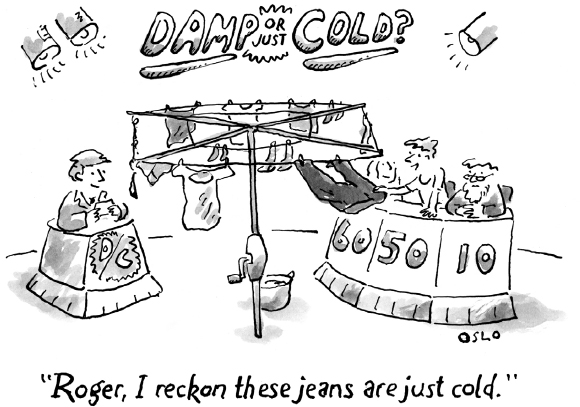
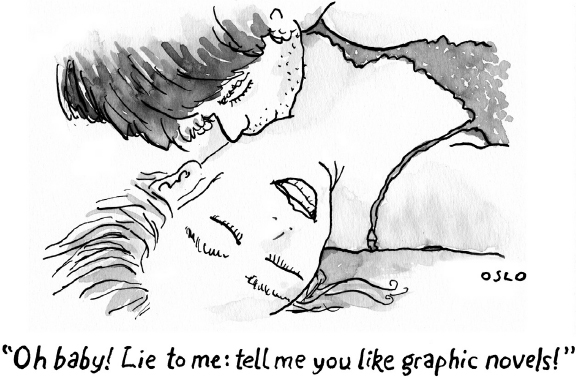 You still here? Alright then, Ill go on USE YOUR DELUSION Why would you want to be a cartoonist? Theres no money in it. At best youll be regarded as quirky, at worst a hobbyist, always that ex-schoolbook doodler who never grew out of the adolescent thrill of making their classmates laugh. Sure, it was cute when you were ten, but adults who draw cartoons are, well, weird. Sorry, but after years in the business Im not sure I want to be part of the club that would have me as a member. Why? Because despite their wide-eyed enthusiasm, the vast majority of cartoonists are odd, unfunny hacks driven by a dogged belief they possess the funny gene and that their god-given task is to make the world laugh. Thats not to say that delusion is a bad thing; a misguided belief in my comedic abilities was all I needed to get started! A puffed-up, unjustifiable belief in my abilities helped my cartoons graduate from happy accidents to things I actively engineered.
You still here? Alright then, Ill go on USE YOUR DELUSION Why would you want to be a cartoonist? Theres no money in it. At best youll be regarded as quirky, at worst a hobbyist, always that ex-schoolbook doodler who never grew out of the adolescent thrill of making their classmates laugh. Sure, it was cute when you were ten, but adults who draw cartoons are, well, weird. Sorry, but after years in the business Im not sure I want to be part of the club that would have me as a member. Why? Because despite their wide-eyed enthusiasm, the vast majority of cartoonists are odd, unfunny hacks driven by a dogged belief they possess the funny gene and that their god-given task is to make the world laugh. Thats not to say that delusion is a bad thing; a misguided belief in my comedic abilities was all I needed to get started! A puffed-up, unjustifiable belief in my abilities helped my cartoons graduate from happy accidents to things I actively engineered.
Like a circus pony who can perform a number of adorable tricks, I expanded my repertoire to cover surreal, political, gag, analytical, silent, symbolic, anthropophilic, nonsensical and wordy cartoons, whether I was good at them or not. ITS NOT (FOR) YOU, ITS (FOR) ME And like all cocky creatives full of their own self-worth, I kind of dont care if you think Im funny or not, TBH. Nothing personal, but the pain and misery I suffer coming up with jokes is done for my own amusement and for the approval of a few friends whose sense of humour I trust. You too should inoculate yourself from the siren calling you to make everyone laugh. Joke-making is not without its rules, but is ultimately a personal activity, like handwriting, poetry or dcoupage. So, first make yourself laugh, then try your friends.
Then, if you can be bothered, move on to complete strangers, editors, publishers CARTOONLAND! Even if youre not a joke-drawing wonk, I am excited that you are interested in cartoons. Im sure you agree its a beautiful thing when a neat little sketch and a handful of well-crafted words give birth to a little laugh. And cartoonland is a fun place to loiter. Cartoons exist in their own time and space realities, beyond physics and logic, made up by creative, lateral-thinking artists, witty and alive to absurdity, immune to predictability, and devilishly cheeky and subversive. Sure, adult cartoonists are weird but the world needs them! This book wont make you a cartoonist, but it will nudge you a little closer into cartoonland by explaining why some cartoons sing and some stink. B. B.
White said at the start of this intro, which might account for the stink.) Most of all, this book shows you plenty of my own cartoons sourced from years of delusion, self-doubt, misfires and occasional hits, all of them underpinned by the vainglorious hope that the pain and misery Ive suffered creating them has been worth something. Enjoy!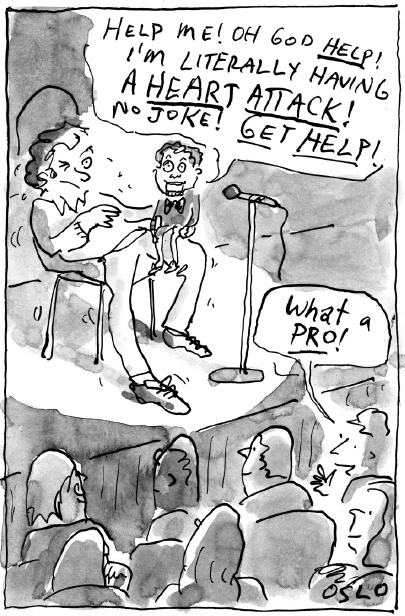 THE GAG REFLEXHow to draw it so they get itNo one recalls cartoons they didnt like. Bob Mankoff, cartoon editor, the New Yorker I DIDNT READ A COPY OF THE NEW YORKER until I moved to Hanoi in 1999. Moca Caf was one of the few ex-pat joints that did a good greasy Western-style breakfast, perfect for a Vietnamese rice wine hangover, and it was there that I got to know gag cartoons of the highest order. Michael Maslin, Roz Chast, Leo Cullum and Danny Shanahan did artful drawings, as the magazine called them, that were both silly and smart. After years of drawing landscapes, and only dabbling in drawn jokes, I found a way forward into cartoonland through the New Yorkers sardonic, derogatory and yet oddly life-affirming cartoons. Gag cartoons, like skin diseases, come in all sizes, shapes and hues.
THE GAG REFLEXHow to draw it so they get itNo one recalls cartoons they didnt like. Bob Mankoff, cartoon editor, the New Yorker I DIDNT READ A COPY OF THE NEW YORKER until I moved to Hanoi in 1999. Moca Caf was one of the few ex-pat joints that did a good greasy Western-style breakfast, perfect for a Vietnamese rice wine hangover, and it was there that I got to know gag cartoons of the highest order. Michael Maslin, Roz Chast, Leo Cullum and Danny Shanahan did artful drawings, as the magazine called them, that were both silly and smart. After years of drawing landscapes, and only dabbling in drawn jokes, I found a way forward into cartoonland through the New Yorkers sardonic, derogatory and yet oddly life-affirming cartoons. Gag cartoons, like skin diseases, come in all sizes, shapes and hues.
Yet unlike skin diseases, but more like haiku poems, gag cartoons are underpinned by some defining principles. Heres my attempt at a definition: Gag cartoons are (mostly) not political, instructional or informative. They (usually) feature a (funny) drawing (often) accompanied by (funny) words. They are self-contained, (almost) always non-sequential and depict either stuff we know in the real world or stuff we understand can happen only in cartoonland (like talking animals). Gag cartoons construct their own universe where they exist independently of a headline or a body of text (I am always amused when a pithy New Yorker cartoon is juxtaposed within the columns of a tragically serious essay). The point of a gag cartoon is to be liked, appreciated, maybe audibly laughed at, if its lucky.
And, as Mr Mankoff said, if theyre not liked theyre forgotten, mercifully. Thats about it. Easy! Now go make your own! 

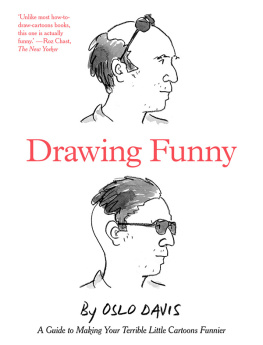

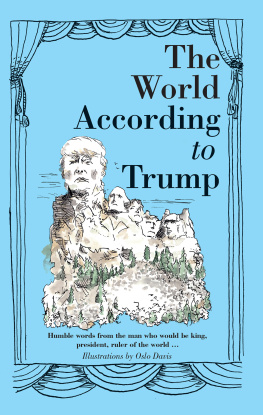
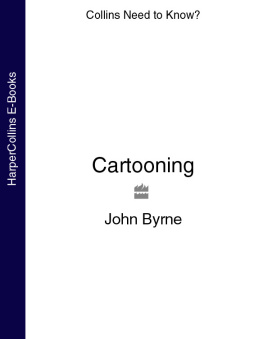

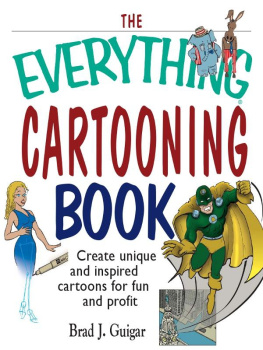





 You still here? Alright then, Ill go on USE YOUR DELUSION Why would you want to be a cartoonist? Theres no money in it. At best youll be regarded as quirky, at worst a hobbyist, always that ex-schoolbook doodler who never grew out of the adolescent thrill of making their classmates laugh. Sure, it was cute when you were ten, but adults who draw cartoons are, well, weird. Sorry, but after years in the business Im not sure I want to be part of the club that would have me as a member. Why? Because despite their wide-eyed enthusiasm, the vast majority of cartoonists are odd, unfunny hacks driven by a dogged belief they possess the funny gene and that their god-given task is to make the world laugh. Thats not to say that delusion is a bad thing; a misguided belief in my comedic abilities was all I needed to get started! A puffed-up, unjustifiable belief in my abilities helped my cartoons graduate from happy accidents to things I actively engineered.
You still here? Alright then, Ill go on USE YOUR DELUSION Why would you want to be a cartoonist? Theres no money in it. At best youll be regarded as quirky, at worst a hobbyist, always that ex-schoolbook doodler who never grew out of the adolescent thrill of making their classmates laugh. Sure, it was cute when you were ten, but adults who draw cartoons are, well, weird. Sorry, but after years in the business Im not sure I want to be part of the club that would have me as a member. Why? Because despite their wide-eyed enthusiasm, the vast majority of cartoonists are odd, unfunny hacks driven by a dogged belief they possess the funny gene and that their god-given task is to make the world laugh. Thats not to say that delusion is a bad thing; a misguided belief in my comedic abilities was all I needed to get started! A puffed-up, unjustifiable belief in my abilities helped my cartoons graduate from happy accidents to things I actively engineered. THE GAG REFLEXHow to draw it so they get itNo one recalls cartoons they didnt like. Bob Mankoff, cartoon editor, the New Yorker I DIDNT READ A COPY OF THE NEW YORKER until I moved to Hanoi in 1999. Moca Caf was one of the few ex-pat joints that did a good greasy Western-style breakfast, perfect for a Vietnamese rice wine hangover, and it was there that I got to know gag cartoons of the highest order. Michael Maslin, Roz Chast, Leo Cullum and Danny Shanahan did artful drawings, as the magazine called them, that were both silly and smart. After years of drawing landscapes, and only dabbling in drawn jokes, I found a way forward into cartoonland through the New Yorkers sardonic, derogatory and yet oddly life-affirming cartoons. Gag cartoons, like skin diseases, come in all sizes, shapes and hues.
THE GAG REFLEXHow to draw it so they get itNo one recalls cartoons they didnt like. Bob Mankoff, cartoon editor, the New Yorker I DIDNT READ A COPY OF THE NEW YORKER until I moved to Hanoi in 1999. Moca Caf was one of the few ex-pat joints that did a good greasy Western-style breakfast, perfect for a Vietnamese rice wine hangover, and it was there that I got to know gag cartoons of the highest order. Michael Maslin, Roz Chast, Leo Cullum and Danny Shanahan did artful drawings, as the magazine called them, that were both silly and smart. After years of drawing landscapes, and only dabbling in drawn jokes, I found a way forward into cartoonland through the New Yorkers sardonic, derogatory and yet oddly life-affirming cartoons. Gag cartoons, like skin diseases, come in all sizes, shapes and hues.